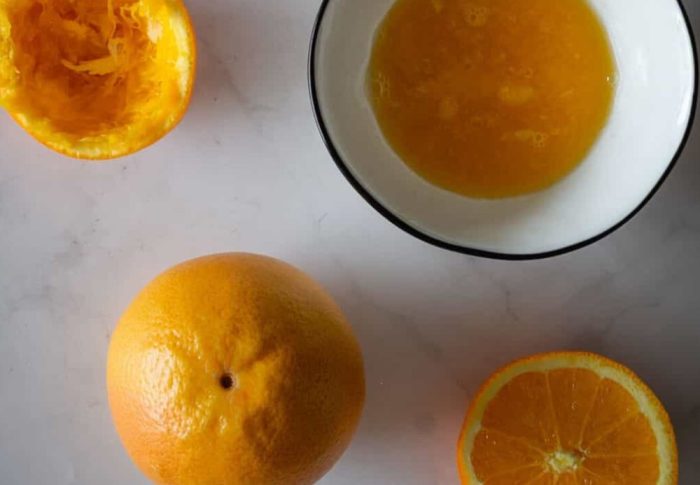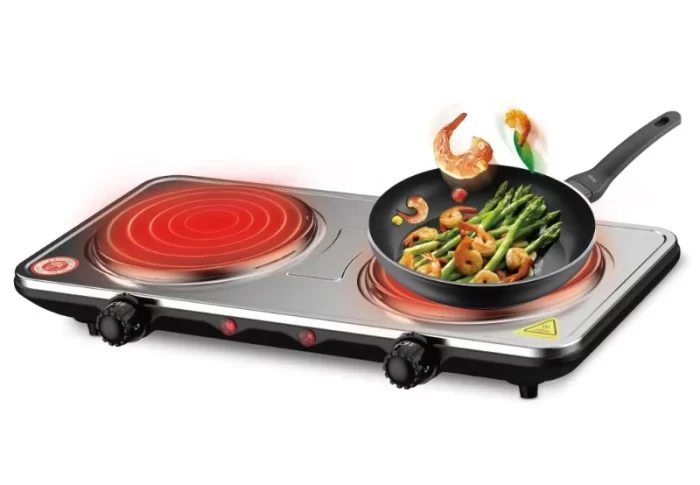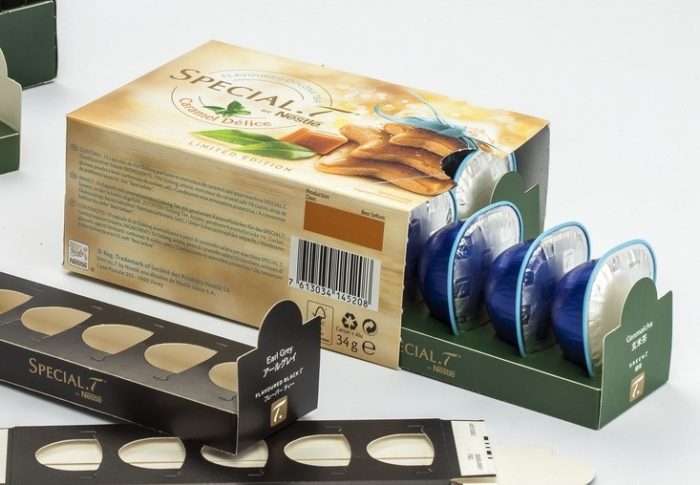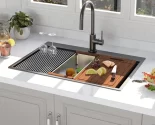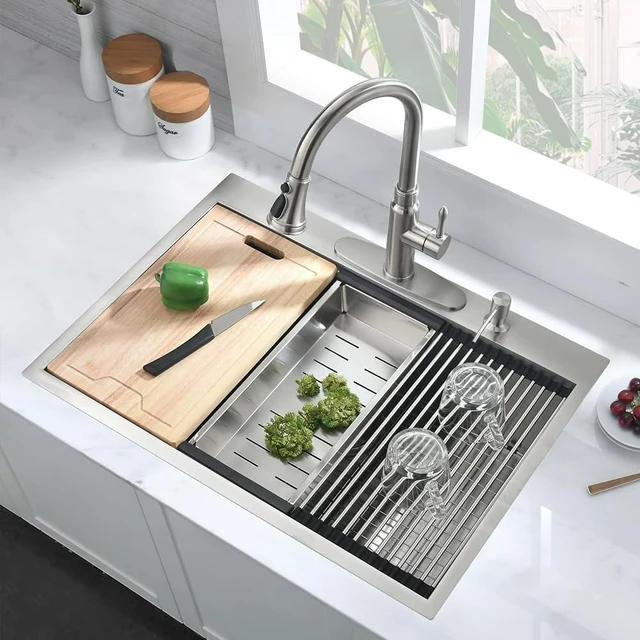
Which is best for kitchen sink?
Introduction
Selecting the right kitchen sink is an essential decision for any homeowner or renovator. The kitchen sink serves as a functional centerpiece, handling everyday tasks such as dishwashing, food preparation, and clean-up. With a multitude of options available, finding the best kitchen sink to suit your needs can be overwhelming. In this comprehensive guide, we will explore different types of kitchen sinks, materials, sizes, configurations, and additional features to help you make an informed decision.
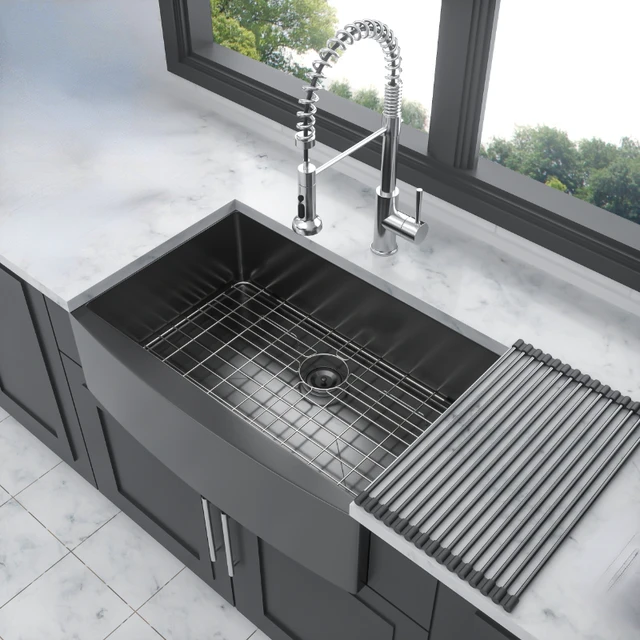
Which is best for kitchen sink?
I. Types of Kitchen Sinks
-
Undermount Sinks:
- Undermount sinks are installed beneath the countertop, resulting in a sleek and seamless appearance. These sinks are compatible with various countertop materials and make cleaning effortless.
-
Top mount (Drop-in) Sinks:
- Top mount, or drop-in sinks, are inserted from above and have a visible rim that rests on the countertop. These sinks tend to be more affordable and easier to install, making them a popular choice for kitchens.
-
Farmhouse (Apron) Sinks:
- Farmhouse sinks feature a large, exposed front panel, often extending slightly beyond the countertop. They add a charming, rustic look to the kitchen and are suitable for traditional or country-style designs.
-
Integrated Sinks:
- Integrated sinks are made from the same material as the countertop, creating a seamless and cohesive look. These sinks provide a modern and minimalist aesthetic.
-
Corner Sinks:
- Corner sinks are ideal for maximizing space in smaller kitchens. They are installed in the corner of the countertop, utilizing the often-underutilized corner area.
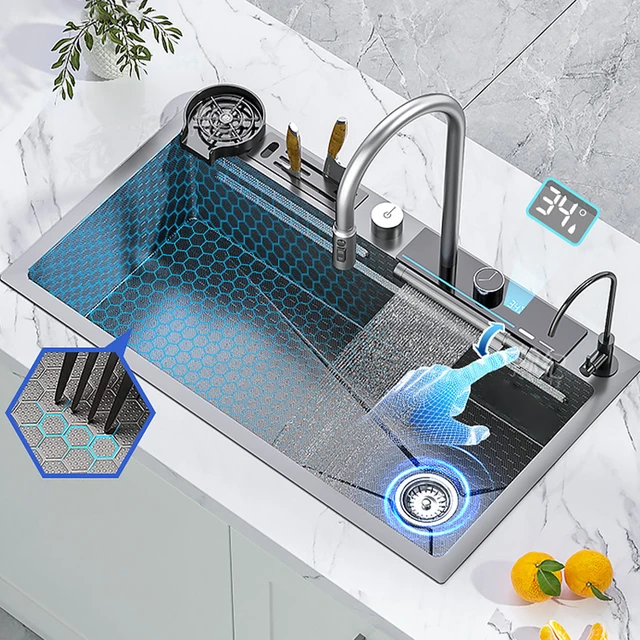
II. Sink Materials
-
Stainless Steel:
- Stainless steel is a popular choice for kitchen sinks due to its durability, resistance to stains and corrosion, and ease of maintenance. It suits various kitchen styles and is available in a range of finishes.
-
Cast Iron:
- Cast iron sinks offer a timeless and traditional appeal. They are extremely durable and resistant to scratches and stains. However, they require regular maintenance to prevent chipping and rusting.
-
Fireclay:
- Fireclay sinks are made from molded ceramic clay and then fired at high temperatures, resulting in a solid and heavy sink. They are known for their durability, non-porous surface, and resistance to heat and stains.
-
Composite Granite:
- Composite granite sinks combine natural granite stone with resin or acrylic materials. They offer a realistic granite appearance, durability, resistance to scratches and stains, and superior heat resistance.
-
Copper:
- Copper sinks exude elegance and character, developing a unique patina over time. They are antimicrobial, resistant to heat and stains, but require regular maintenance to prevent discoloration.
III. Sink Size and Configuration
-
Single Bowl Sinks:
- Single bowl sinks feature a single, large basin. They maximize usable space and are suitable for homeowners who require ample room for washing larger pots and pans.
-
Double Bowl Sinks:
- Double bowl sinks are divided into two basins of equal or different sizes. They provide versatility, allowing for multitasking, such as simultaneous food preparation and dishwashing.
-
Triple Bowl Sinks:
- Triple bowl sinks offer even greater flexibility, with three separate basins. They are beneficial for those who prefer to separate different tasks, such as food preparation, soaking, and washing.
-
Bowl Depth:
- Consider the depth of the sink bowl(s) when choosing a size. Deep bowls can accommodate larger items and reduce the risk of splashing, while shallower bowls can be advantageous for easier reach and accessibility.
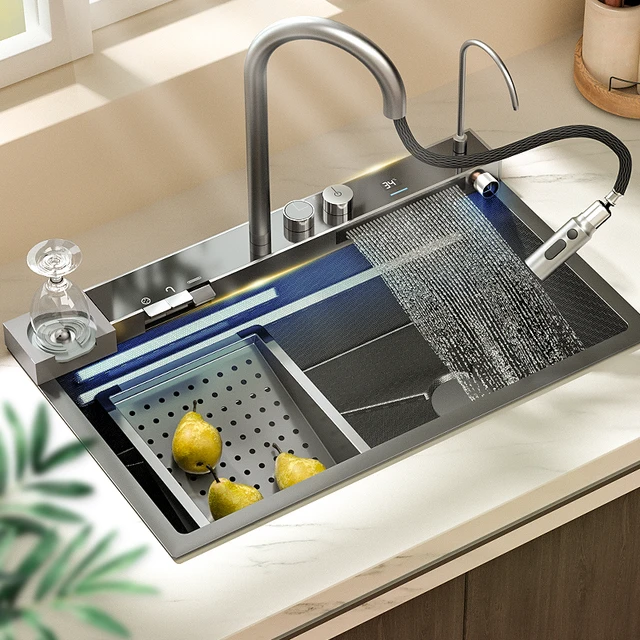
IV. Additional Sink Features
-
Faucet Compatibility:
- Ensure that the chosen sink is compatible with the type and style of faucet you plan to install. It is essential to consider the number of faucet holes and their spacing to match your desired faucet configuration.
-
Accessories and Add-Ons:
- Many sinks offer additional accessories such as colanders, cutting boards, drying racks, or grids. These accessories can enhance the functionality and organization of your sink area.
-
Noise Dampening:
- Some sinks are designed with noise dampening features, such as sound-absorbing pads or undercoating, that minimize the noise generated from running water and dishwashing activities.
-
Easy-Clean Surface Coatings:
- Look for sinks with easy-clean surface coatings. These coatings prevent stains and make cleaning more effortless, reducing the need for harsh chemicals or vigorous scrubbing.
V. Budget Considerations
-
Affordability:
- Kitchen sinks vary widely in price, depending on the material, size, features, and brand. Consider your budget when selecting a sink and choose options that offer the best value for your needs.
-
Long-Term Investment:
- While it may be tempting to opt for a lower-priced sink, investing in a higher-quality and more durable sink can save money in the long run. A well-made sink will last longer and require fewer repairs or replacements.
VI. Maintenance and Care
-
Cleaning Requirements:
- Different sink materials have varying cleaning and maintenance requirements. Consider the amount of time and effort you are willing to dedicate to regular cleaning and upkeep when selecting a material.
-
Stain and Scratch Resistance:
- Choose a sink material that suits your lifestyle and cooking habits. If you anticipate heavy use, opt for a material that is highly resistant to stains, scratches, and general wear and tear.
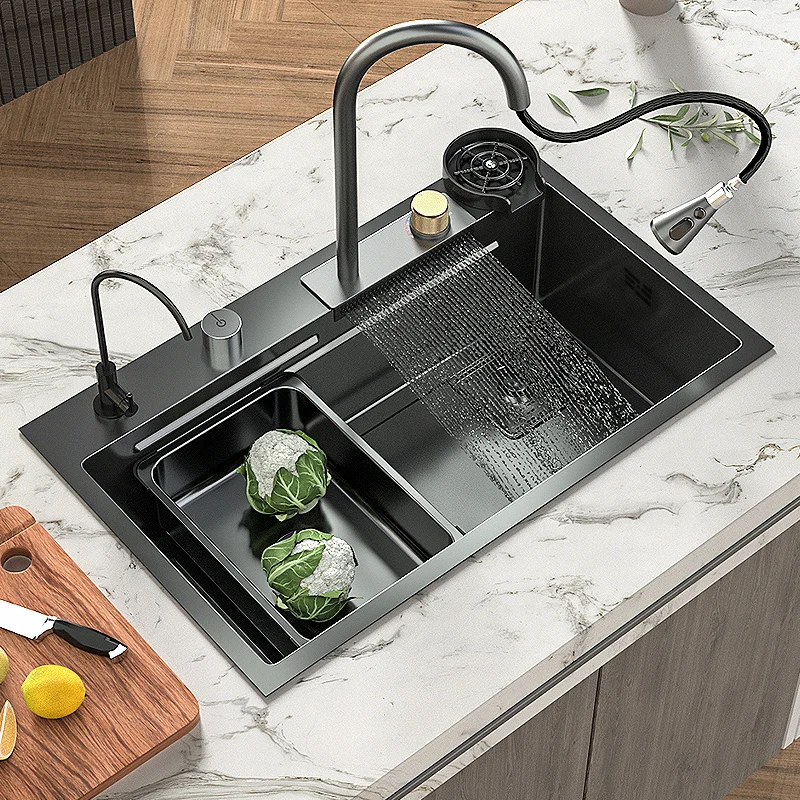
VII. Style and Design
-
Kitchen Décor:
- Take into account the overall style and design of your kitchen when selecting a sink. Ensure that the chosen sink complements the existing features and aesthetics of the space.
-
Finish and Color:
- Some sink materials, such as stainless steel or granite composite, offer various finishes and colors. Choose a finish that coordinates well with the kitchen’s color palette and preferred aesthetic.
VIII. Eco-Friendly Options
-
Recycled Materials:
- Many manufacturers offer sinks made from recycled materials, such as stainless steel or composite materials. Choosing a sink made from recycled materials can contribute to reducing your environmental footprint.
-
Water Conservation:
- Consider sinks with additional water-saving features, such as low-flow faucets or built-in spray functions. These features promote water conservation and contribute to eco-friendly practices in the kitchen.
IX. Professional Installation
-
Plumbing Considerations:
- It is recommended to consult a professional plumber or installer when replacing or installing a new sink. They can ensure proper alignment, secure plumbing connections, and resolve any potential issues during the installation process.
-
Local Regulations and Codes:
- Familiarize yourself with local building codes and regulations regarding sink installation to ensure compliance and avoid any legal or safety issues.
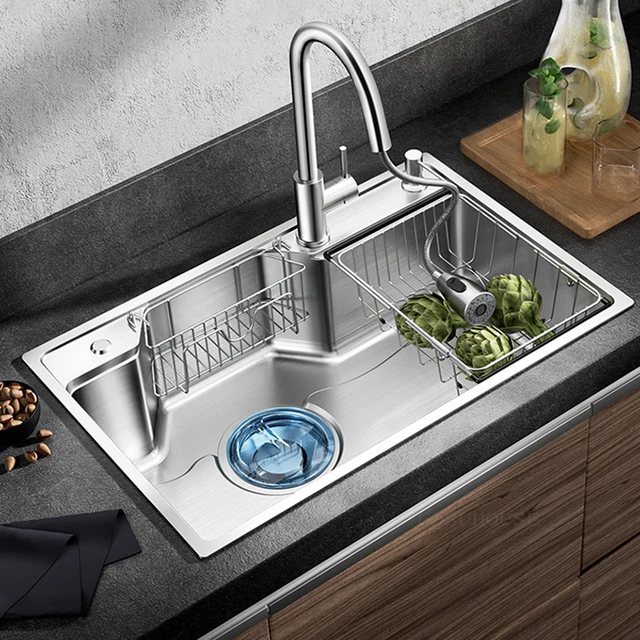
Does the kitchen sink need to match the dishwasher?
The kitchen sink does not necessarily need to match the dishwasher in terms of style or design. In many cases, the sink and dishwasher are separate components with their own distinct appearances. However, some homeowners may prefer to choose a sink and dishwasher that complement each other visually to create a cohesive look in the kitchen. This could involve selecting similar finishes or coordinating colors between the sink and dishwasher. Ultimately, the decision to match the sink and dishwasher is a matter of personal preference and the overall desired aesthetic of the kitchen.
X. Conclusion
Choosing the best kitchen sink involves considering various factors, including sink type, materials, size, configuration, and additional features. Understanding your specific needs and preferences, as well as budget and maintenance considerations, are vital in making an informed decision. Whether you prioritize functionality, durability, aesthetics, or eco-friendliness, there is a vast array of sink options available to suit your requirements. By carefully evaluating all aspects and consulting professionals when necessary, you can select the ideal kitchen sink that will serve as a functional centerpiece and enhance your overall kitchen experience.

